Building a Scarab 650 in foam sandwich.
This boat was design to be built using foam sandwich or plywood
The main hull building frame was set up. Sorry I didn't take any photos of this stage but it is similar to the Scarab 32 building frame.
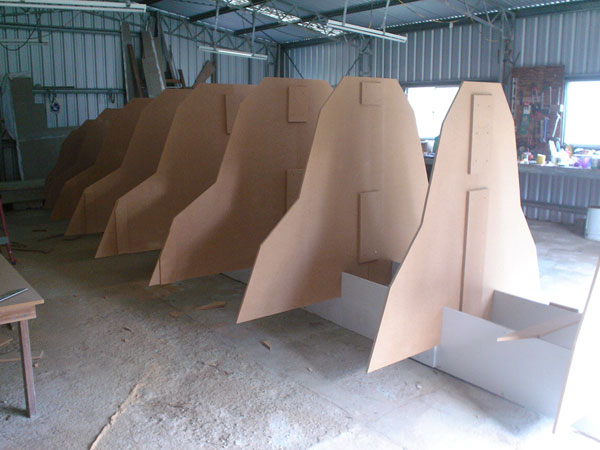
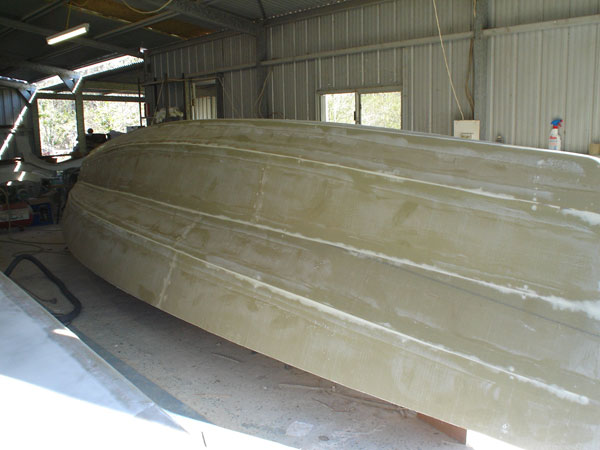
The panels were attached to the building frame. The chines were joined using light weight bog. Then they were sanded and faired and taped with fibreglass tape.
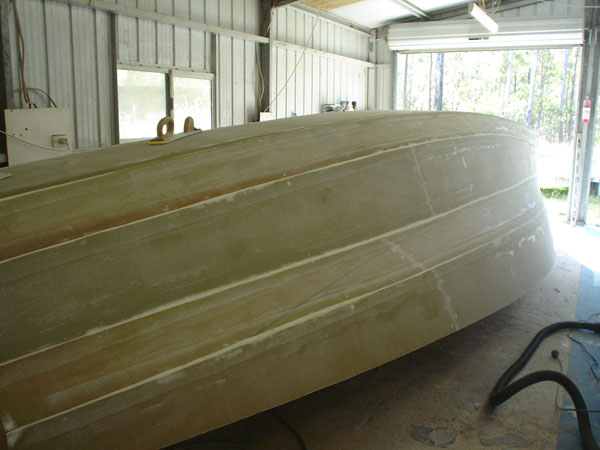
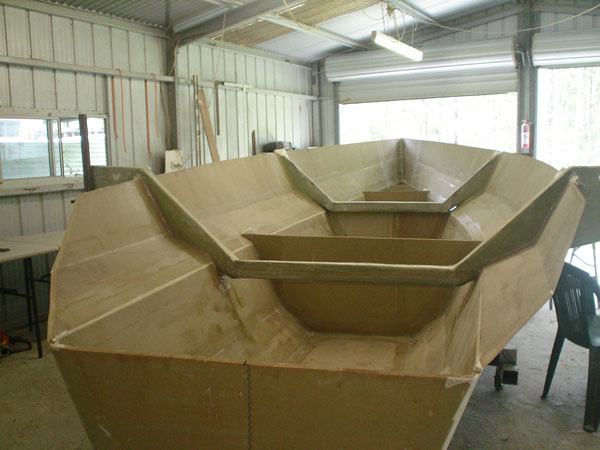
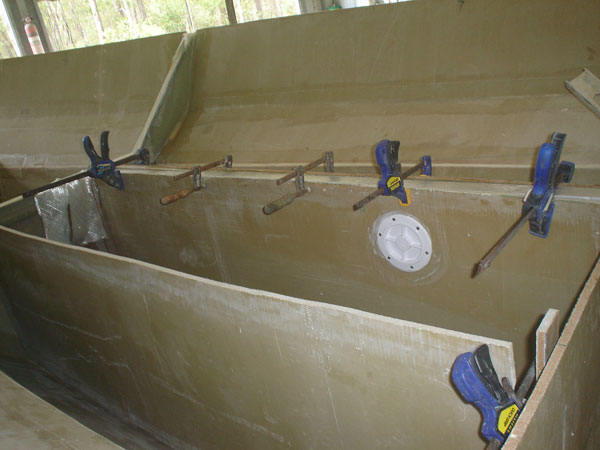
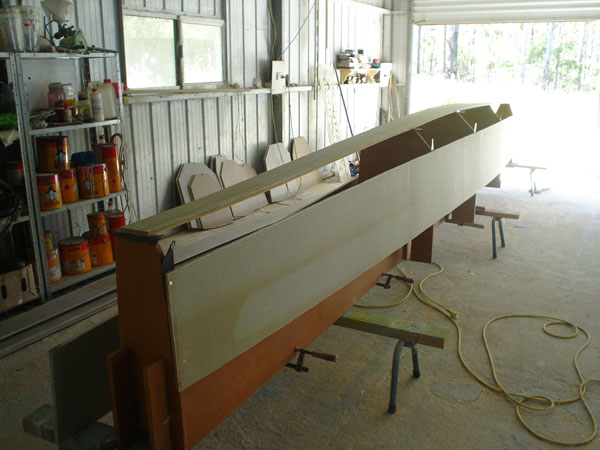
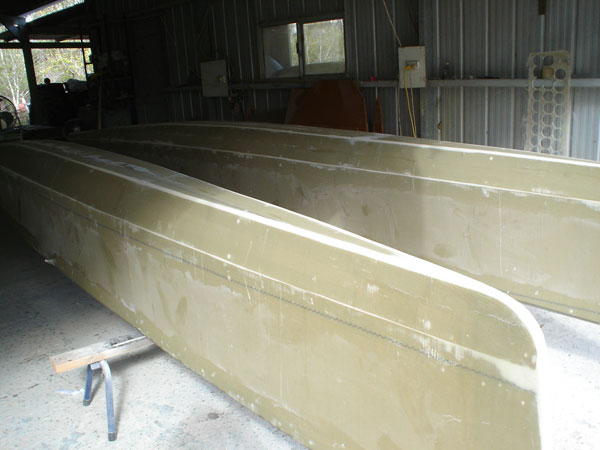
The outside joints were taped.The float hulls are removed from the building frame and turned.
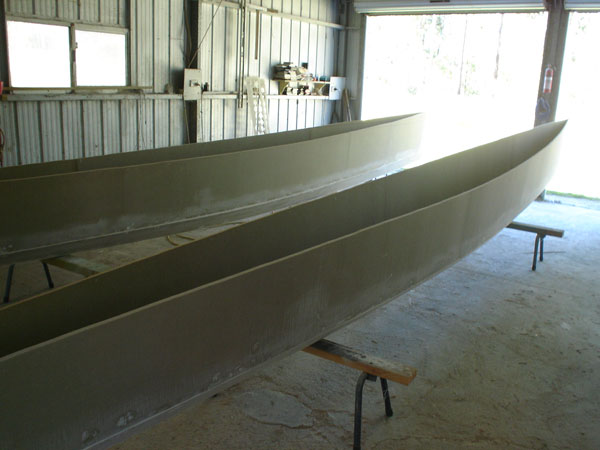
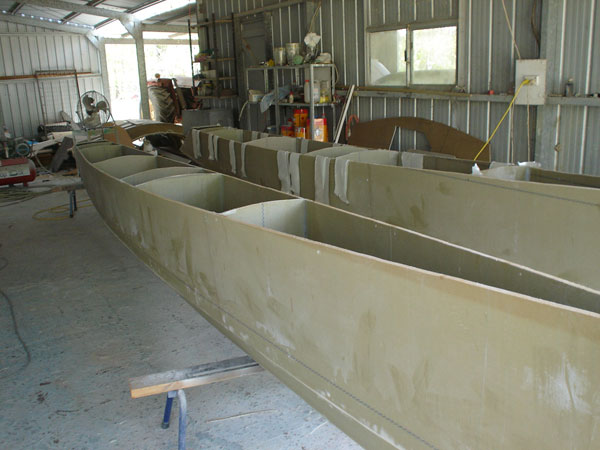
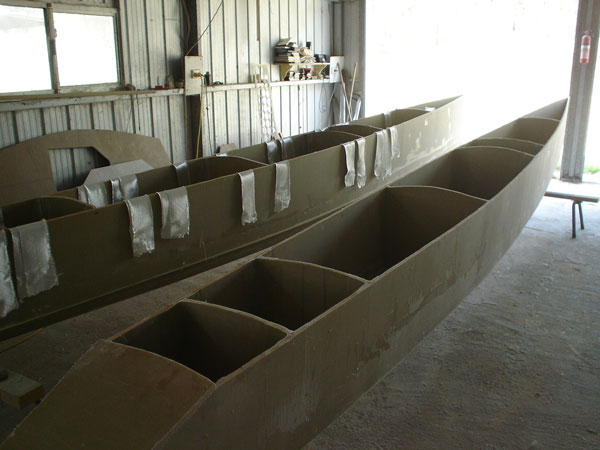
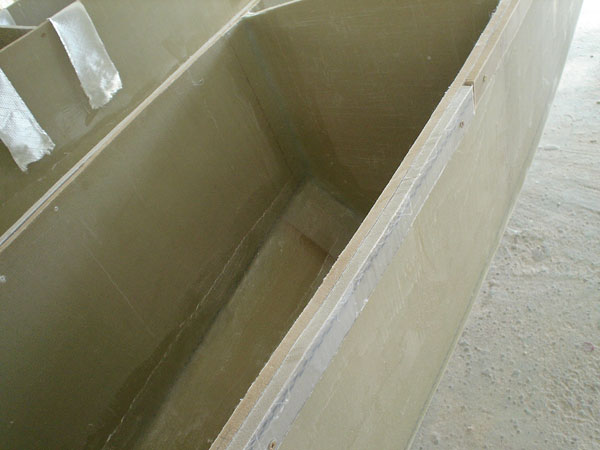
An easy way to build the deck and a slight deviation from the plans is to cover the deck foam with a layer of unidirectional
glass on one side. This allows the foam to bend over the float shape. We found that once the foam was covered with glass it was
too stiff to bend in an appropriate curve.
Scrap pieces of laminated foam were attached to the outside of the top panel.
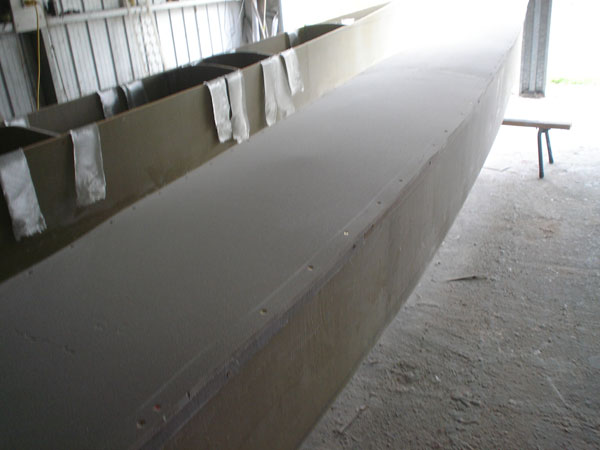
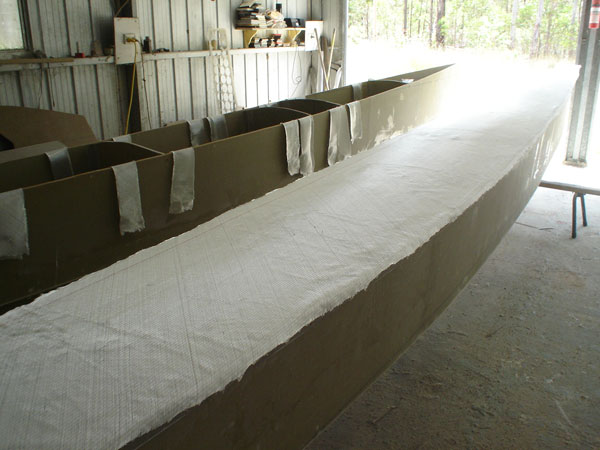
Deck is attached to these scraps using dry-wall screws. The foam is then laminated with biaxial or double bias glass. When
the glass is hardened the screws through the top panel can be removed, the deck removed and turned. The deck is marked around
the scrap foam and the screws removed. Carefully cut around the deck slightly larger than the marked area. The deck can now
be laminated with biaxial or double bias glass.
The scrap laminated foam can be used on the inside of the floats as an extra area to attach the deck.
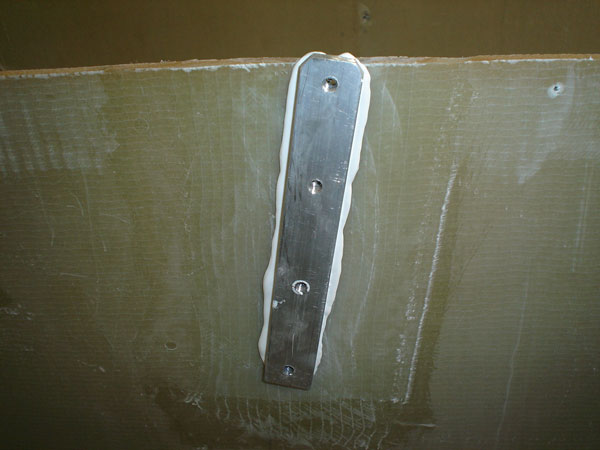
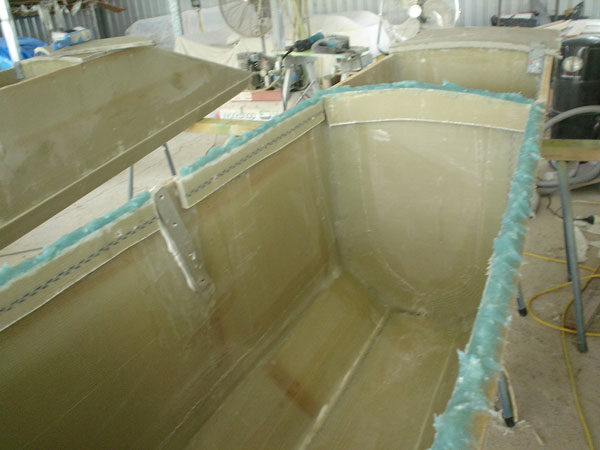
After finding the position for the back stay chain plate the holes were drilled. The foam was removed and backfilled with strong filler. A threaded plate was glued in with Sikaflex.
The foam was removed from the edges of the hull sides and decks glued to the hull. The glue we use is resin mixed with aerosil/cabosil and cotton fibres.
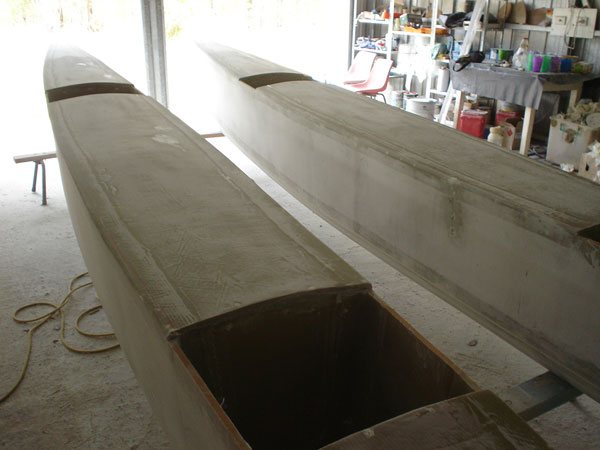
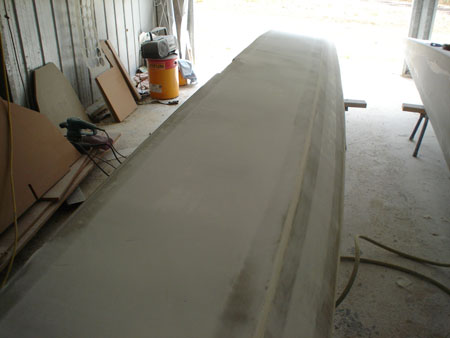
The deck was added in three sections leaving the space to add the beams later.
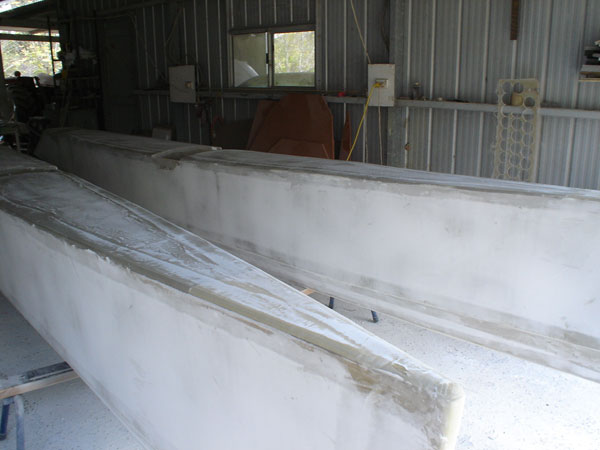
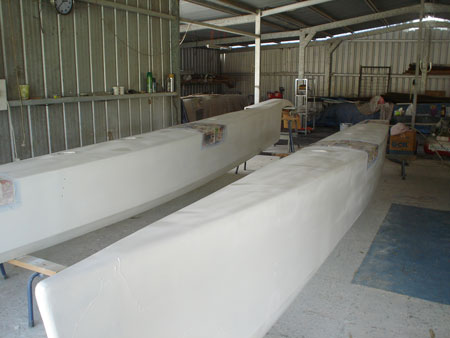
The floats were filled (resin mixed with Q-cells) and is now ready to paint.
Floats were primed using Jotun Pengard. The area around the beam attachment area were masked.
The beams were built inside a female mould. The original mould was plywood but because we will need it to produce more than the four beams for this boat a fibreglass mould was constructed. For most people a plywood mould will be OK.
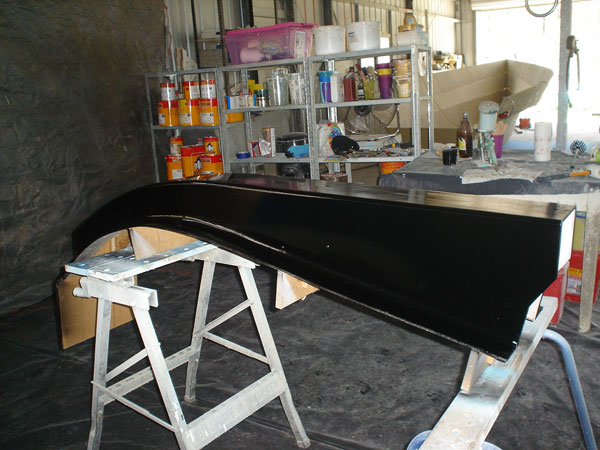
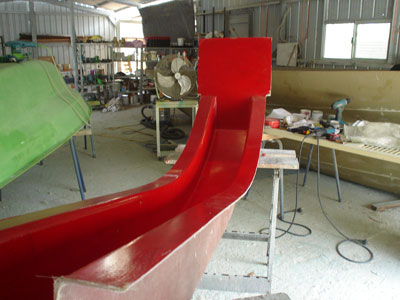
The plywood mould was painted with Jotun imperite to give a shiny smooth finish.
The mould was painted with tooling gelcoat and layers of glass were added.

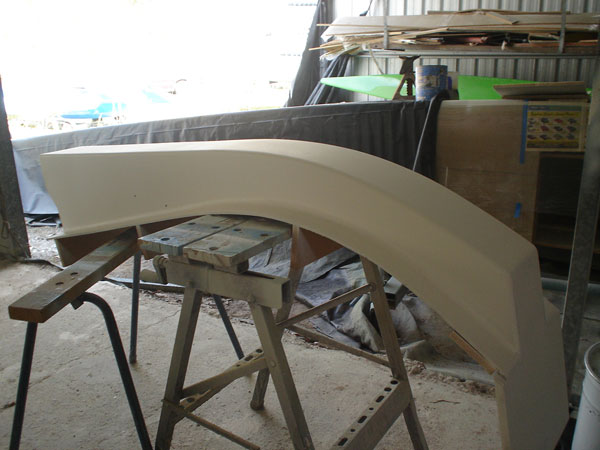
The finished mould was waxed and the required number of glass layers applied. We use unwaxed resin so the job can be spread over a few days. By not layering more than 1200 grams of glass at a time we can reduce the shinkage.